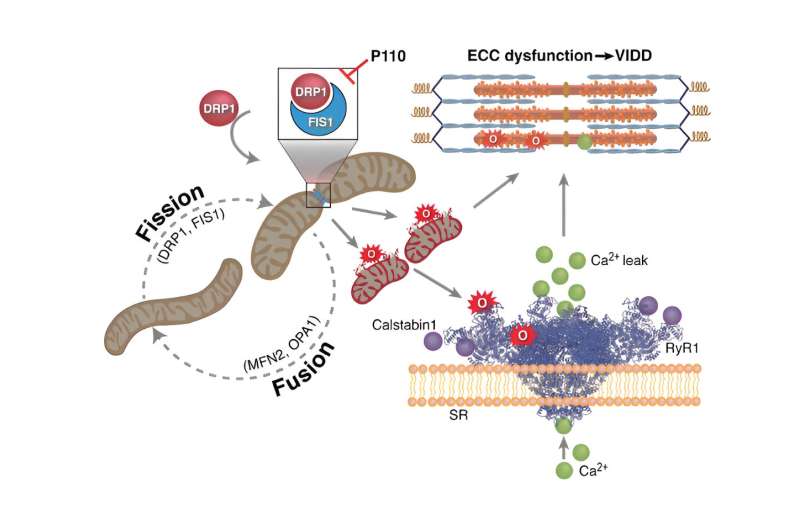This article has been reviewed according to Science X's editorial process and policies. Editors have highlighted the following attributes while ensuring the content's credibility:
fact-checked
peer-reviewed publication
proofread
Research explores molecular basis of ventilator-induced diaphragm weakness

A study, published in PNAS Nexus, presents evidence that mitochondrial fragmentation is a proximal mechanism underlying ventilator-induced diaphragm dysfunction (VIDD)—and identifies a possible therapeutic to limit diaphragm atrophy during a stay in intensive care.
Previous research has established that many of the cellular pathways responsible for VIDD are kicked off by oxidative stress stemming from diaphragm inactivity.
Stefan Matecki and colleagues studied the molecular causes of this oxidative stress in mice. Just six hours on mechanical ventilation was enough to increase expression of dynamin-related protein 1 (DRP1), which is involved in mitochondrial membrane fission and associated with a reduction in mitochondrial size and interaction.
Mechanical ventilation, by completely resting the diaphragm, results in a sudden reduction in its energy requirements. This reduction prompts the diaphragm to initiate a program of fission for breaking down its superfluous mitochondria, which previously supplied it with energy in the form of ATP. However, mitochondrial fragmentation produces reactive oxygen species in excess, which negatively impact Ca2+ homeostasis, a dysregulation at the root of VIDD.
The authors show that if at the initiation of mechanical ventilation, mitochondrial fission was blocked thanks to a molecule like P110, which prevents DRP1 from interacting with the mitochondrial membrane, VIDD could be mitigated. The molecule P110, by limiting the mitochondrial fragmentation induced by mechanical ventilation, reduces the production of reactive oxygen species at the basis of calcium homeostasis impairment and VIDD.
According to the authors, any pharmacological therapeutics that could limit mitochondrial fission at the initiation of mechanical ventilation, could be a promising therapeutic intervention to prevent VIDD.
More information: Aberrant mitochondrial dynamics contributes to diaphragmatic weakness induced by mechanical ventilation, PNAS Nexus (2023). DOI: 10.1093/pnasnexus/pgad336. academic.oup.com/pnasnexus/art … 93/pnasnexus/pgad336
Journal information: PNAS Nexus
Provided by PNAS Nexus





















